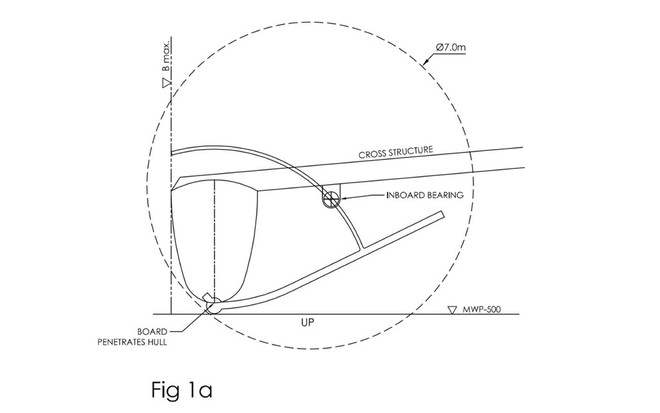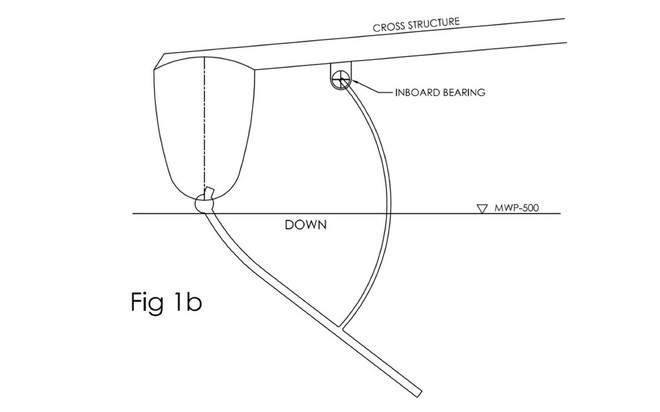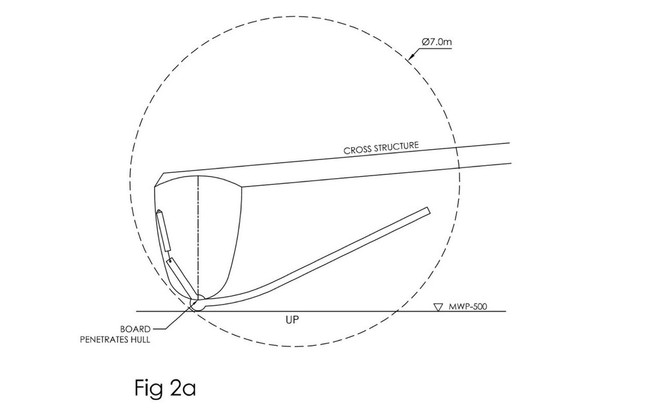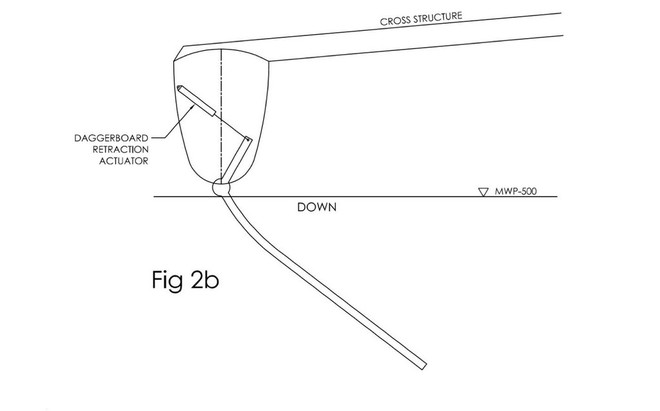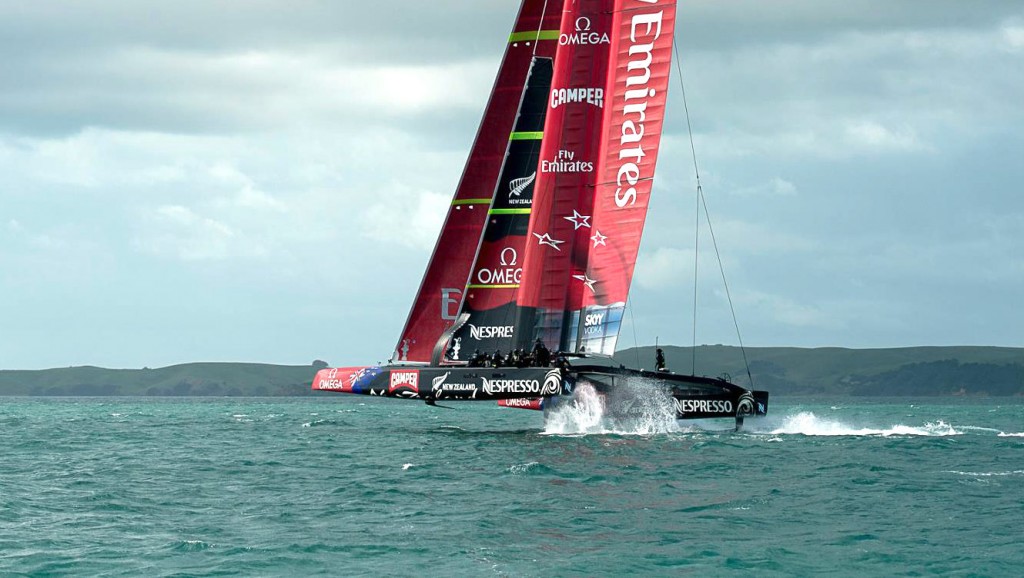Teenage Mutant Daggerboards
It have been easier, wouldn’t it, to have allowed trimmable winglets on AC72s?
The prospect of flying two AC72 hulls clear of water resistance—and under control—has been keeping the engineers up late.
The recently-released Interpretation Number 21 of the AC72 rule by the Measurement Committee is a response to some innovative noodling on how the job might be accomplished, given the rule’s prohibition of trimmable winglets.
Per standard procedure, the published ruling does not identify the team requesting clarification on a set of questions. And it doesn’t necessarily mean these are good ideas.
Questions:
1. Is there anything in the class rule that prevents a daggerboard being supported in a bearing attached to the cross structure?
2. In Figure 1a & 1b is the point where the daggerboard penetrates the hull bottom shell, the lowest load transferring bearing referred to in rule 9.4?
3. In Figure 1a & 1b is the daggerboard shown, which is a single rigid component, considered to be one daggerboard?
4. Is there anything in the class rule that prevents an AC 72 yacht from using the daggerboard concept shown in figures 1a & 1b? Specifically , this concept includes a daggerboard:
That is a ‘y’ shaped single rigid component.
That penetrates the hull at a lower bearing.
That retracts by rotating at the lower bearing in the hull, and sliding through an upper bearing on the cross structure.
That, at times, is supported in two places: at a lower bearing on the hull, and an upper bearing on the cross structure.
Whose rake and yaw could be adjusted by means of a rotation of the lower hull bearing, and a rotation and/or translation of the upper cross structure bearing.
5. Is there anything in the class rule that prevents an AC72 yacht from using the daggerboard concept shown in figures 2a & 2b? Specifically this concept includes a daggerboard:
That is a single rigid component,
That penetrates the hull at a lower bearing,
That retracts by rotating at the lower bearing on the hull, with an actuator on the part of the board internal to the hull,
Whose rake and yaw could be adjusted by means of a rotation of the lower hull bearing.
The answer, as signed by Measurement Committee Chairman Nick Nicholson, is, nope. Nothing in the rule to prevent it.
If you think it’s a good idea, and you can pull it off, have at.
 l”Hydroptere coming on. Photo © Kimball Livingston
l”Hydroptere coming on. Photo © Kimball Livingston
The problem is hugely different, by the way, from the problems facing Alain Thebault when he was designing (still is designing and redesigning) the fastest sailboat in the world, l’Hydroptere DCNS. Massive foils set at 45 degrees lift Hydroptere’s 60 feet of length and 79 feet of beam to the point of retaining only 21 square feet of wetted (resisting) surface. But those foils do not adjust; they are fixed in position and both are in play at all times. The only moveable is the rudder mechanism, with fixed winglets, which hinges in toto to control pitch. The AC72 rules includes this:
9.9 Daggerboards shall not be designed or used to generate force for the purpose or effect of increasing righting moment when used on the windward side of an AC72 Yacht. The difference . . .
According to the latest plan, l’Hydroptere will hang around San Francisco Bay until the October 4-7 ACWS is complete, then sail back to Southern California, go to the hard, and look toward a Los Angeles-Honolulu record attempt in 2013. The next time, they can be ready when the isobars say GO.
And BTW: Oracle Team USA was back on the water on Monday. No, it’s not a trimaran, but that center “hull” that isn’t a hull contributes a lot to rigidity, plus the flexibility to move the wing forward or aft, if needed. Could it possibly help the boat through a maneuver?

